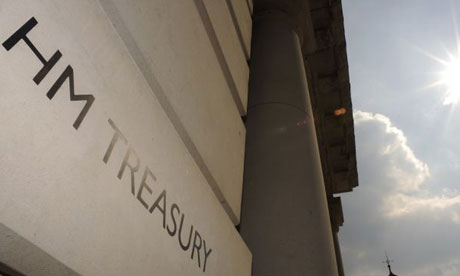Government borrowing highest since 1940s
But the public coffers are not in quite the disastrous state that many economists and even the Treasury had been expecting a few months ago

PSNB at the highest level since 1946/7. Photograph: PA
The parlous state of Britain's public finances was confirmed this morning with official data showing the worst year since records began in the 1940s.
The Office for National Statistics (ONS) said that, excluding the cost of interventions to support the financial sector, public sector net borrowing (PSNB) – the gap between the exchequer's tax take and its spending – stood at £163.4bn for the financial year just ended. This was below the government's latest forecast of £166.5bn.
It was the worst since records began in 1946/7 and compounds other economic blows to Labour's election campaign this week after news that the number of people out of work is at its highest for 15 years while inflation remains way above target.
While Britain recorded its worst full-year gap for decades the public coffers are not in quite the disastrous state that many economists and even the Treasury had been expecting a few months ago. The chancellor had previously pencilled in £178bn before cutting that to £166.5bn in his March budget.
"It provides the government with some modestly good news, although [PSNB of] £163.4bn is hardly something to gloat about," said Howard Archer, economist at IHS Global Insight.
The public finances are now widely expected by economists to improve over coming months as a recovering economy brings in stronger tax receipts.
Indeed, the PSNB for March alone was slightly better than economists had forecast at £23.498bn. March typically shows a big deficit as public spending spikes for the year-end but this year it was the biggest for that month since records began in 1993. Economists had forecast a slightly worse £24bn, according to a Reuters poll.
The other measure of the public finances, the public sector net cash requirement (PSNCR), came in at £25.752bn in March. That was better than £28.359bn a year earlier and also a much lower level of borrowing than the £32bn economists had forecast.
Separate data published by the ONS showed retail sales rose again in March but not as quickly as expected. Sales were up 0.4% on the month compared with a forecast for a 0.6% rise. On a year earlier, sales volumes rose 2.2% compared with forecasts for 2.4%.
The retail sales data could herald a stronger finish to a week packed with politically charged economic data. The ONS publishes its first estimate of GDP growth for the first quarter on Friday morning.
No comments:
Post a Comment